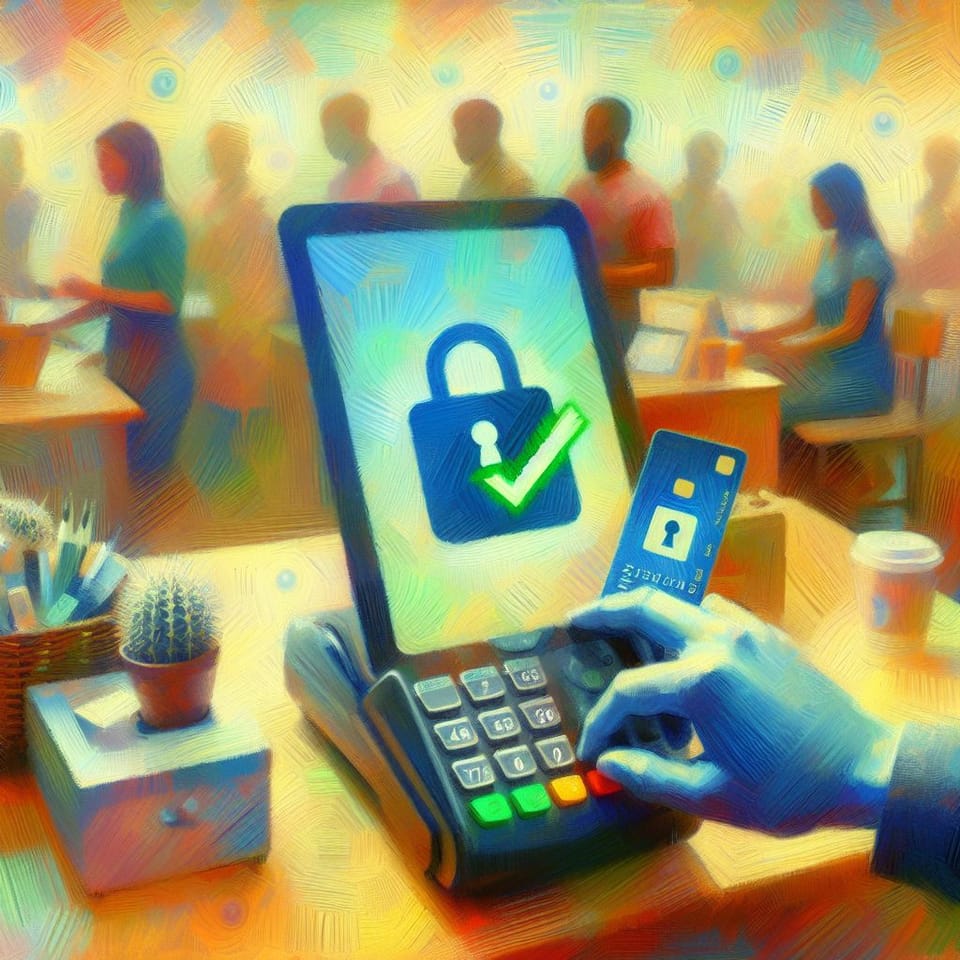The UX Advantage: Strengthening B2B Payment Security

As the world becomes increasingly digitalized, B2B payments are no exception. With the rise of digital payments, businesses are facing new challenges in securing their payment processes. In this article, we will explore the critical role that UX plays in a successful B2B payment security strategy.
The Importance of Fraud Prevention in UX
Fraud prevention is a key part of a good user experience for B2B payment solutions. According to a recent study by PYMNTS, 70% of businesses consider fraud prevention to be a top priority when selecting a payment provider. This is because fraud can have a significant impact on a business's bottom line, reputation, and customer trust.
To prevent fraud, businesses need to prioritize UX in their payment processes. This involves implementing security measures that are both effective and user-friendly. For example, businesses can use multi-factor authentication, biometric authentication, and tokenization to secure their payment processes. These measures not only enhance security but also provide a seamless and intuitive payment experience for users.
The Role of UX and AI in Combating Fraud
While UX is critical in preventing fraud, it is not the only solution. AI can also play a significant role in detecting and preventing fraud in B2B payments. However, AI is not a silver bullet for fraud prevention, and it has its limitations.
One of the main limitations of AI is its inability to detect "flash fraud" and more insidious forms of fraud that cannot be fought with current AI. This is where UX and AI can work harmoniously to combat fraud. By incorporating UX principles into AI-powered fraud detection systems, businesses can create a more effective and user-friendly fraud prevention strategy.
For example, businesses can use AI-powered fraud detection systems that provide real-time alerts to users when suspicious activity is detected. These alerts can be designed to be intuitive and easy to understand, providing users with actionable steps to take to prevent fraud. By combining UX and AI, businesses can create a more effective and user-friendly fraud prevention strategy.
The Importance of Holistic Measures with UX at the Core
While UX and AI are critical in preventing fraud, they are just one part of a holistic approach to B2B payment security. Businesses need to prioritize security at every step of the payment process, from the initial transaction to the final settlement.
This involves implementing security measures such as encryption, firewalls, and intrusion detection systems to protect against cyber threats. It also involves educating users on best practices for security, such as using strong passwords and avoiding public Wi-Fi networks when making payments.
At the core of this holistic approach is UX. Businesses need to prioritize UX in their security measures to ensure that users are not only protected but also have a seamless and intuitive payment experience. This involves designing security measures that are user-friendly and easy to understand, providing users with clear instructions and feedback throughout the payment process.
The Crucial Role of UX Writing in B2B Payment Security
In B2B payments, data is abundant, but there's a lack of clear and actionable insights to take from it. This is where UX writing comes into play, as it plays a crucial role in creating intuitive, clear alerts and communication around fraud data, empowering businesses to take an active role in fraud prevention.
Why UX Writing Matters in B2B Payments
B2B payments are essential for the smooth functioning of businesses, but they also come with security concerns. By understanding users' security concerns and creating clear, actionable instructions, UX writing can help businesses navigate the complexities of B2B payment security. For example, concise and actionable language can empower users to personalize their security settings easily, such as setting up transaction notifications, spending limits, and device verification.
Moreover, UX writing can help demystify the technology behind fraud prevention by communicating the robust measures in place and emphasizing the platform's commitment to protecting users' transactions. This transparency reassures users that their transactions are being actively monitored, fostering a sense of security and trust.
Gamifying and Proactive Approach to Fraud Prevention
UX writing can also contribute to gamifying and taking a proactive approach to fraud prevention. By presenting security measures engagingly and interactively, UX writing can encourage users to actively participate in fraud prevention efforts. For instance, businesses can use UX writing to guide users through necessary security steps, demonstrating their commitment to user safety and helping mitigate the negative impact of potential threats.
Holistic Approach to Fraud Prevention
Fraud prevention is not just about technology and AI, as they are not silver bullets. They must work holistically with UX experts to create a stronger, more proactive approach to fraud prevention. This includes understanding users' security concerns, designing intuitive interfaces, and providing regular performance testing to optimize security features and ensure a smooth user experience.
Use Cases For UX Writing in Fraud Protection
1. Multifactor Authentication: "Secure your account with multifactor authentication. Add an extra layer of security with unique codes sent to your phone or email. 99.9% of accounts with multifactor authentication are more secure against unauthorized access."
Insight: Multifactor authentication is a powerful tool for securing accounts against unauthorized access, providing an additional layer of protection that can significantly reduce the risk of fraud.
- Transaction Monitoring: "Stay ahead of fraud with real-time transaction monitoring. Our AI-powered system detects 95% of suspicious transactions and alerts you promptly."
Insight: Real-time transaction monitoring is a critical component of fraud prevention, allowing businesses to detect and prevent fraudulent transactions before they can cause significant damage.
- Account Takeover Prevention: "Protect your account from unauthorized access with account takeover prevention. Our system detects and blocks 98% of suspicious login attempts in real-time."
Insight: Account takeover prevention is essential for protecting accounts against unauthorized access, ensuring that only legitimate users can access the account and reducing the risk of fraud.
- Fraud Risk Management: "Manage your fraud risk with our comprehensive fraud risk management solution. Customize your risk tolerance settings to suit your business needs and reduce fraud risk by up to 70%."
Insight: Fraud risk management is a critical component of fraud prevention, allowing businesses to tailor their security measures to their specific needs and reduce the risk of fraud by up to 70%.
- Educational Resources: "Boost your fraud prevention knowledge with our library of educational resources. Learn best practices for secure account management and stay informed about the latest threats. Users who engage with our educational resources are 50% less likely to fall victim to fraud."
Insight: Providing educational resources on fraud prevention is an effective way to empower users to take proactive measures to protect their accounts, reducing the likelihood of fraud and increasing user confidence in the security measures in place.
- Regular Security Audits: "Trust in our commitment to security. We conduct monthly security audits to ensure your account remains safe and up-to-date with the latest security standards."
Insight: Regular security audits demonstrate a business's dedication to protecting user data and provide a sense of confidence in the security measures in place, ultimately enhancing the user's trust in the platform.
- Real-time Fraud Detection: "Rest easy with our advanced real-time fraud detection system. We'll notify you immediately if any suspicious activity is detected, giving you the chance to take action before fraud occurs. Our system detects 90% of potential fraud cases, providing you with peace of mind and proactive fraud prevention.
Insight: Real-time fraud detection is a powerful tool for preventing fraud, allowing businesses to detect and prevent fraudulent transactions before they can cause significant damage. By detecting 90% of potential fraud cases, businesses can provide users with greater peace of mind and proactive fraud prevention.
In conclusion, B2B payment security is critical in today's digital age, and UX plays a critical role in a successful B2B payment security strategy. By prioritizing fraud prevention, incorporating UX principles into AI-powered fraud detection systems, and implementing holistic security measures with UX at the core, businesses can create a payment experience that is both secure and user-friendly.
At WDIR, we specialize in helping businesses improve their user experience and create successful B2B payment security strategies. Contact us today to learn more and take the first step toward optimizing your B2B payment experience.
